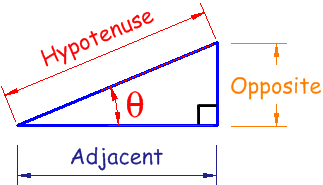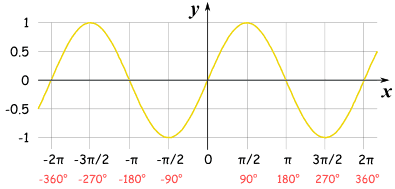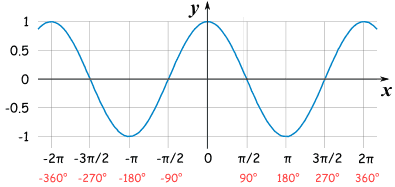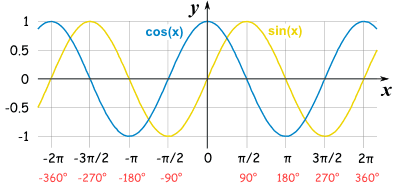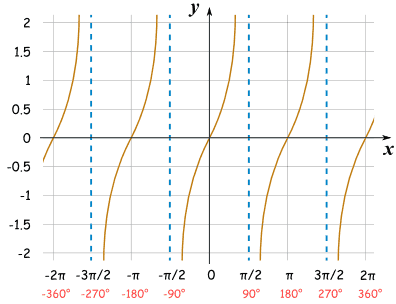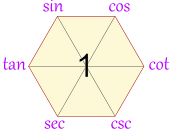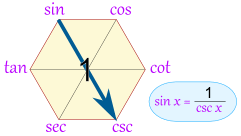An angle is two rays with a common endpoint.

To measure an angle, we draw a unit circle, centered around the common endpoint O of the rays of the angle. The measure of the angle in radians is then defined as the length of the arc of the circle between the points P and Q of intersection of the circle and the rays. The greek letters θ (theta) and φ (phi) are commonly used to denote angular measure. As one can see in the figure, the line segments OPand OQ each have length 1, while the arc PQ has length θ, which we then call the measure of the angle ∠POQ.

As an example, consider a right triangle, as shown below. What is its measure in radians? Since the corresponding arc is one-quarter of the unit circle, whose total arc length is 2π, we see that the measure of a right angle is 2π/4 = π/2 radians.

Besides radians, angles are commonly measured in another unit called degrees. The measure of an angle in degrees is equal to 180/π times its measure in radians.Thus, the measure of a right angle is (180/π)(π/2) = 90 degrees, also written as 90°, and the measure of a full circle is (180/π)(2π) = 360 degrees, or 360°. To convert from degrees to radians, we multiply by π/180. Thus, for instance, an angle of 60° is equal to (60)(π/180) = π/3 radians.

